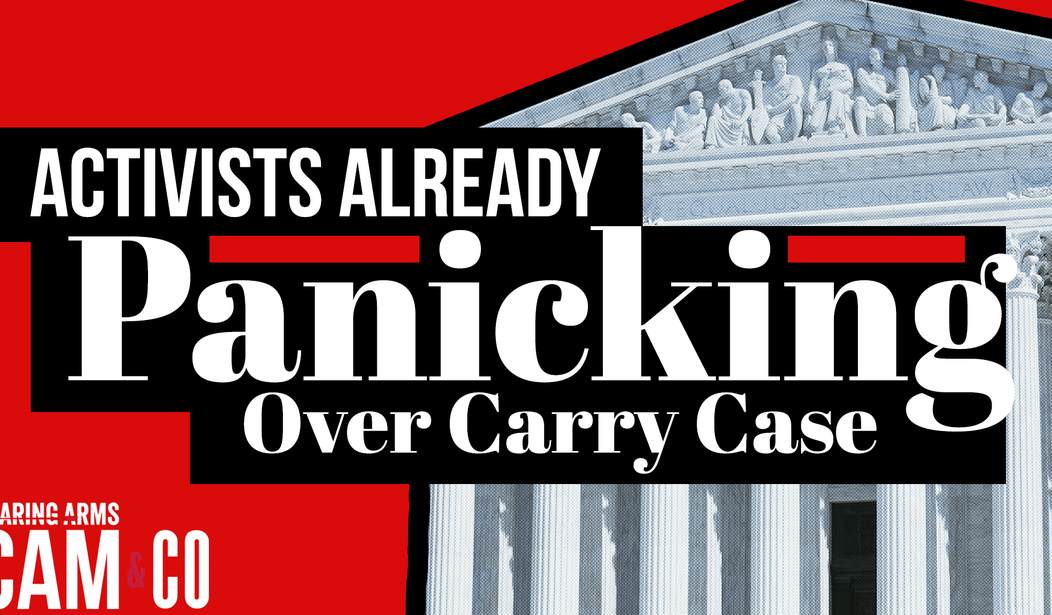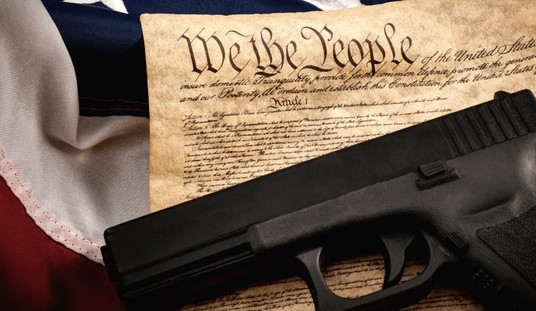We’re still probably at least a month away from the Supreme Court issuing its decision in a case challenging New York’s “may issue” concealed carry permitting scheme, but anti-gun activists from Giffords and Everytown are already starting to not-so-quietly panic over what the Court could say about the right to bear arms.
The latest hand-wringing and pearl-clutching comes courtesy of the business magazine Fast Company, which for some reason decided to give British-born and current Brooklyn resident Talib Visram space to pen an anti-gun screed that’s apparently designed to scare the bejeezus out of non-gun owners and those lacking critical thinking skills. Here’s a taste:
Accustomed to relatively strict gun laws, New Yorkers watching mass shootings unfold across other parts of the country in recent years may have felt somewhat invincible to indiscriminate gun violence. April 12 was a wake-up call, when a gunman started shooting at passengers on a subway car in Brooklyn during a morning commute. Now, a landmark Supreme Court case that’s due for a ruling this summer could compound fears of more, similar gun violence in crowded city spaces.
Most of us understand that those strict gun laws did nothing to prevent the shooting on the New York City subway. If anything, the laws prevented potential armed citizens from shooting back (something that Visram also objects to later in his piece). But Visram and other anti-gun advocates like Giffords Law Center deputy chief counsel David Pucino are intent on using the subway shooting to try to justify New York’s “may issue” laws.
But while the pro-gun lobby preaches that a “good guy with a gun” can take down the bad guy, that scenario is incredibly rare, Pucino says. Take the case of the subway shooting: If multiple people had started firing amid the smoky haze, and without the adequate training in a high-pressure situation, “it’s just going to be more people who are going to be hit with gunshots,” he says. That also jeopardizes the law enforcement response, Underwood argued during the hearings. “They now can’t tell who’s shooting, and the shooting proliferates and accelerates.”
“His vision was this apocalyptic place where there’s criminals at every corner who are waiting to mug you,” Pucino says. “Perhaps a vision of New York City that’s more based on movies than actually being in the subway.”
Gun violence in New York City has already surged since the onset of the pandemic. In January 2022, gun crime had increased by a third versus January 2021; in the first half of 2021, there were more shootings in New York City than in the previous decade. And, in one weekend in March 2022, 29 people were shot, including at a bar in Queens, and on a subway platform in Brooklyn. “I think most New Yorkers who commute on the subway, as I do, want that to be a space where there aren’t guns,” Pucino says.
Pucino may end up ditching the subway after learning this, but concealed carry isn’t banned on New York City public transportation. Here’s the specific MTA policy:
No weapon, dangerous instrument, or any other item intended for use as a weapon may be carried in or on any facility or conveyance. This provision does not apply to law enforcement personnel and persons to whom a license for such weapon has been duly issued and is in force (provided in the latter case the weapon is concealed from view).
To be fair, my guess is that few, if any, of the New York City residents who’ve received a rare permit to carry ever use public transportation, given that permits tend to be granted to the wealthy, the powerful, and the politically connected. Still, the NYC subway system is not currently a “gun-free” zone, though you can bet that will be one of the first changes the New York City Council adopts if the state’s “may issue” laws are struck down in Bruen.
Ultimately though, the panic among gun control activists isn’t because more folks may be able to lawfully carry a firearm on a New York City subway car. Gun prohibitionists like Pucino and Everytown Law Center’s Eric Tirschwell are concerned that the SCOTUS decision in Bruen poses an existential threat to their decades-long attempts to criminalize the Second Amendment.
Even if the court rules in favor of the plaintiffs, it’s hard to predict how broad its decision may be. A narrow ruling could involve striking down the “proper cause” requirement for a permit. New York would struggle to restrict guns in public, and may have to start issuing concealed carry permits. The ruling may also extend to the remaining nine may-issue states, including California, Maryland, and Massachusetts, at a time when gun violence is rising across the U.S. Still, this is the best-case scenario.
If the ruling is more expansive, it could ditch the entire public-safety framework that lower courts have been using to uphold carry restrictions. It could provide a whole new basis for future decisions—on all kinds of gun regulation lawsuits currently in limbo, and supported by the gun lobby, relating to assault weapons bans, large-magazine bans, and the minimum age for the sale of handguns. They could fundamentally redefine the Second Amendment and change America’s gun laws.
“That could be a really devastating decision that could have wide-ranging—and I think, not currently fathomable—impacts,” Pucino says. “Because, it potentially could mean that every gun law on the books is called into question.”
As long as those laws don’t violate our right to keep and bear arms, there should be no problem. And if those laws do infringe on our Second Amendment rights then they shouldn’t be on the books to begin with.
The fact that these anti-gunners are terrified of the Court using the text of the Constitution and the history of our Second Amendment rights says a lot about their fraudulent view of that right… but hopefully the Supreme Court’s decision in Bruen will say even more.









Join the conversation as a VIP Member